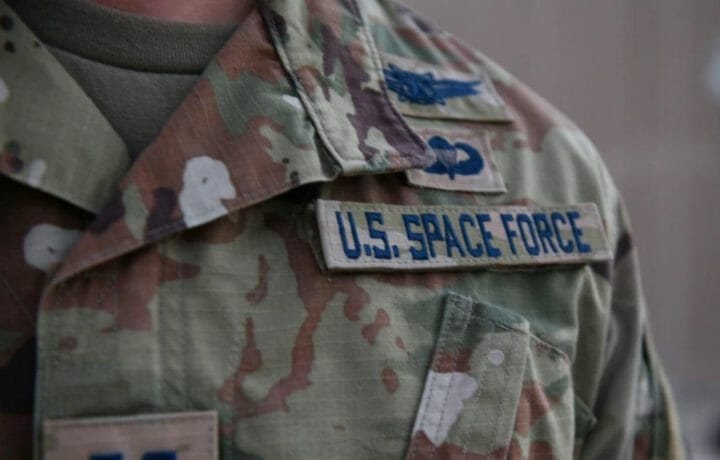The U.S. Space Force—the sixth and newest branch of the United States military—will be sending its first Guardian into space during a NASA mission to the International Space Station this summer. While the service is organized, trained, and equipped to conduct space operations, and protect the interests of the U.S. in space, its personnel have operated entirely from the Earth since the Force’s inception.
That will change, at least a bit, when Col. Tyler “Nick” Hague will join three other astronauts on NASA’s SpaceX Crew-9 mission, which is set to launch no earlier than August. Though this will mark the first time a Guardian has gone to space, Hague actually flew beyond the heavens twice with the U.S. Air Force and NASA before he transferred to the Space Force.
It gets a bit more complicated as now-retired U.S. Space Force Col. Mike Hopkins was awarded the recognition of first Guardian in space in 2020, following his transfer from the Air Force to the Space Force.
Hague will head to the ISS on NASA’s SpaceX Crew-9 mission aboard the Dragon spacecraft along with his crewmates—Commander Zena Cardman, Mission Specialist Stephanie Wilson, and Roscomos cosmonaut Mission Specialist Aleksandr Gorbunov. Once they arrive to the spaced-based laboratory, Hague will transition to the role of flight engineer. He, along with the crew, will conduct a wide-ranging set of operations and research activities for the duration of their more than six-month mission.
“The core of our mission on the space station is to perform science experiments and collect data,” Hague said in a statement. “The International Space Station provides a unique platform in microgravity, which allows researchers from around the world to explore and discover processes that could have significant impact on the behavior of our bodies and the environment around us both on Earth and off planet.”
Going For Three
As noted, this will be Hague’s third trip to space—and one he likely hopes will be less eventful, at least in terms of getting to the ISS.
During his first mission in 2018, Hague experienced a rocket booster malfunction resulting in an in-flight launch abort. However, just five months later—in March 2019—Hague and his crew launched again, and made it to the space station, executing a 203-day mission. Hague conducted three spacewalks, totaling 19 hours and 56 minutes and participated in hundreds of experiments in biology, biotechnology, physical science and Earth science.
Following his return to Earth in 2019, Hague transitioned to the Pentagon for a leadership rotation with the newly created Space Force as its director of test and evaluation. In 2021, while serving in that role, he transferred from the Air Force to Space Force.
Orbital Guardians – Not Yet
Since the inception of the Space Force in December 2019, the United States Space Force has continually dismissed the idea that it would deploy troops into orbit anytime soon. However, the Department of Defense (DoD) and NASA do have a long history of collaboration, with roughly two-thirds of NASA astronauts having served in the U.S. military.
“Being a part of this mission is a unique honor, but it’s truly a collective effort,” Hague said. “Guardians worldwide ensure safe and secure operations of critical systems for launch and on station. From GPS satellites that underpin our station navigation systems, to space domain awareness sites around the globe that help NASA prevent orbital debris from colliding with the space station, to the launch range that my crew will use when we liftoff, Guardians provide critical support without which our NASA human spaceflight program wouldn’t be possible.”
Space X Crew-9 will be the ninth operational mission for the privately-owned launch service provider under NASA’s commercial crew program and will spend about six months in space. However, the next ISS flight with SpaceX, Crew-8, is expected to launch to the ISS no earlier than February 22.




